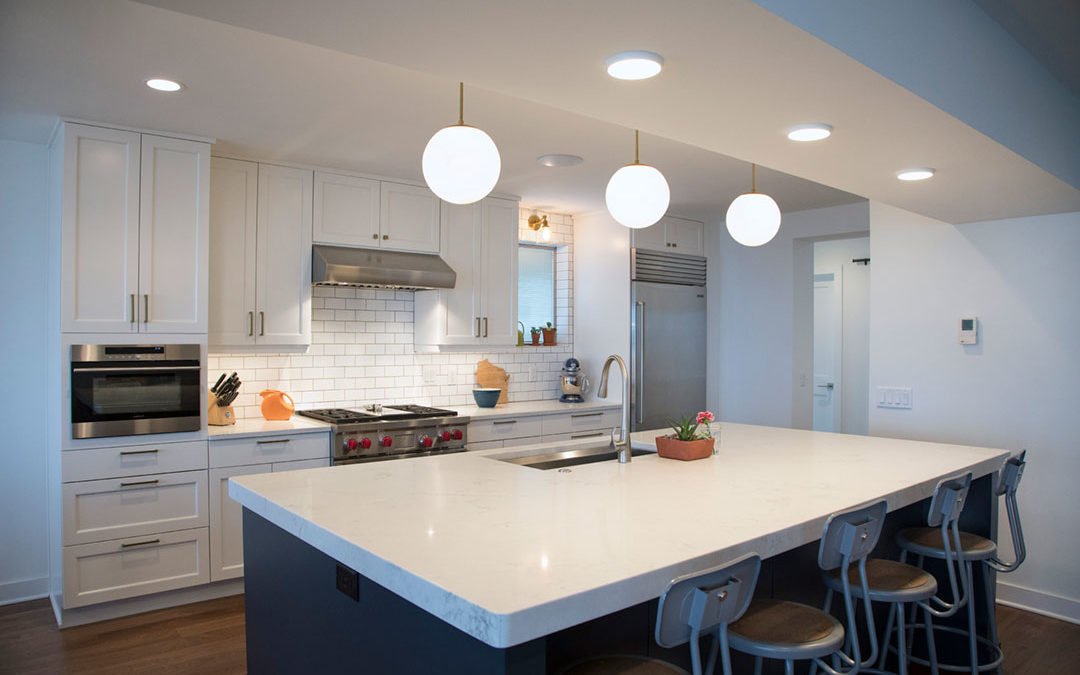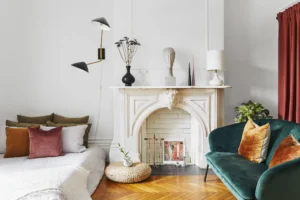The kitchen is one of the most important spaces in any home. It is where we prepare and cook our meals, and where we spend a lot of our time as a family. Lighting is crucial in the kitchen as it not only helps us to see what we’re doing, but it can also add to the overall style and ambiance of the space. However, choosing the right lighting for your kitchen can be a daunting task. In this article, we’ll guide you through everything you need to know about how to choose the right lighting for your kitchen.
1. Determine the Purpose of Your Kitchen Lighting
Before you start looking for lighting fixtures, you need to determine the purpose of your kitchen lighting. Ask yourself questions like, what activities will take place in the kitchen? What type of lighting do you need to complete these activities? What kind of ambiance do you want to create in your kitchen?
2. Consider the Three Types of Lighting
There are three main types of lighting to consider when choosing kitchen lighting. These are ambient, task, and accent lighting. Ambient lighting is general lighting that provides overall illumination. Task lighting, as the name suggests, is used for specific tasks, such as cooking or reading recipes. Accent lighting is used to highlight specific features or areas of your kitchen, such as your countertops or backsplash.
3. Choose the Right Bulb Type
When choosing the right lighting for your kitchen, it is important to consider the type of bulb that you will be using. There are several types of bulbs available, including incandescent, halogen, fluorescent, and LED. LED bulbs are the most energy-efficient and long-lasting, making them an excellent choice for your kitchen.
4. Determine the Correct Size of Your Lighting Fixtures
The size of your lighting fixtures is also an important factor to consider when choosing the right lighting for your kitchen. You should choose fixtures that are proportional to the size of your kitchen. For example, if you have a small kitchen, you should choose smaller fixtures, while if you have a large kitchen, you should choose larger fixtures.
5. Choose a Style That Complements Your Kitchen
The style of your lighting fixtures should complement the style of your kitchen. If you have a traditional kitchen, you may want to choose fixtures with a more classic design. If you have a modern kitchen, you may want to choose fixtures with a more contemporary design.
6. Don’t Forget About Dimmer Switches
Dimmer switches are an excellent addition to any kitchen lighting design. They allow you to adjust the brightness of your lighting, which can be helpful when you want to create a more relaxed ambiance in your kitchen.
7. Consider Energy Efficiency
Energy efficiency is an important consideration when choosing the right lighting for your kitchen. LED bulbs are the most energy-efficient, but you should also look for fixtures that are Energy Star rated.
8. Think About the Placement of Your Fixtures
The placement of your fixtures is also an important factor to consider. You should place fixtures in areas where you need the most light, such as above your countertops or stove. You should also consider the placement of your fixtures in relation to your cabinets and other kitchen features.
9. Get Creative with Lighting Design
Don’t be afraid to get creative with your kitchen lighting design. You can use lighting to highlight specific features in your kitchen, such as your backsplash or cabinets. You can also experiment with different types of fixtures and bulbs to create a unique and stylish look.
10. Don’t Overdo It
While lighting is important in the kitchen, you don’t want to overdo it. Too much lighting can create a harsh and uninviting atmosphere. Remember to balance the amount of light in your kitchen with the style and ambiance you want to create.
11. Consult with a Professional
If you’re still unsure about how to choose the right lighting for your kitchen, consider consulting with a professional. A lighting designer or electrician can help you choose the right fixtures, bulbs, and placement for your kitchen.
12. Consider Maintenance and Cleaning
Another factor to consider when choosing the right lighting for your kitchen is maintenance and cleaning. Choose fixtures that are easy to clean and maintain, especially if you cook a lot in your kitchen. You should also choose bulbs that are easy to replace.
13. Pay Attention to Color Temperature
The color temperature of your lighting is also an important factor to consider. Warm white light is often used in kitchens as it creates a cozy and inviting atmosphere. However, cool white light can be better for task lighting, as it provides a brighter and more focused light.
14. Think About the Cost
The cost of your lighting fixtures and bulbs is another important consideration. While LED bulbs are more expensive upfront, they are more energy-efficient and long-lasting, which can save you money in the long run.
15. Experiment with Different Lighting Combinations
Finally, don’t be afraid to experiment with different lighting combinations in your kitchen. You can mix and match different types of lighting to create a unique and personalized look. For example, you can combine ambient and task lighting to create a warm and functional kitchen.
In conclusion, choosing the right lighting for your kitchen is an important decision that can affect both the functionality and style of your space. Consider the purpose of your lighting, the three types of lighting, bulb type, fixture size and style, placement, energy efficiency, maintenance, color temperature, cost, and experiment with different combinations to create the perfect lighting design for your kitchen.
FAQs
How many types of lighting should I use in my kitchen?
It is recommended to use at least two types of lighting in your kitchen, such as ambient and task lighting, to create a functional and inviting space.
Are LED bulbs the best option for kitchen lighting?
LED bulbs are the most energy-efficient and long-lasting option for kitchen lighting, making them an excellent choice for homeowners.
Can I install dimmer switches on all types of lighting fixtures?
Not all types of lighting fixtures are compatible with dimmer switches. Consult with a professional before installing dimmer switches in your kitchen.
How do I choose the right color temperature for my kitchen lighting?
Warm white light is often used in kitchens for a cozy atmosphere, while cool white light is better for task lighting. Consider the purpose of your lighting and the ambiance you want to create.
Do I need to hire a professional for my kitchen lighting design?
While it is possible to choose and install kitchen lighting on your own, consulting with a professional can ensure that your lighting design is functional, safe, and stylish.



